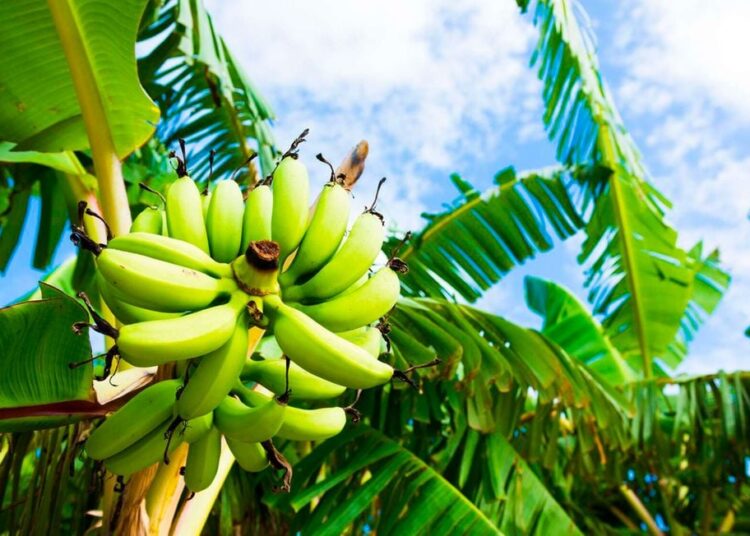Bananas in Africa are threatened by a soil-borne fungus, Fusarium oxysporum (Foc TR4), which has caused significant losses in other countries where banana is produced.
The highly virulent Fusarium wilt of banana (FWB) disease popularly known as Panama disease, has in the past 10 years spread from Southeast Asia, where it was restricted for almost 20 years, to other parts of the world including Africa.
It is the first disease of bananas to have spread globally in the first half of the 20th century.
Foc TR4 affects many banana varieties, including the widely produced and exported Cavendish variety.
Next to Cavendish cultivars, TR4 affects a wide range of banana germplasm, including locally important varieties, and East African Highland bananas — crucial cash crops and staple food for millions of people in the region.
Locally, different clonal banana varieties are sold, in contrast to the global banana trade dominated by clonal Cavendish varieties. These large banana monocultures are extremely vulnerable to numerous diseases.
A previous related survey was conducted over two seasons in banana-based subsistence farming systems in Rwanda, Burundi, north-western Tanzania (Kagera and Kigoma regions) and eastern DR Congo (South Kivu province), to investigate the distribution and incidence of banana FWB as related to cropping systems, edapho-climatic and socio-economic factors.
FWB incidence was found generally high in the region, as 54.1 percent of all farms had disease incidence higher than 40 percent, with Tanzania having the highest (63.6 percent).
For the first time the occurrence of FWB in Rwanda and Burundi, suggests that strategies for its management in east and central Africa should include raising farmers’ awareness on pathogen spread mechanisms and enhancing their access to disease-free planting materials.
This study showed that disease incidence was lower in farms growing cultivar mixtures and at higher altitudes (above 1,600m Above Sea Level). Also, a significant association of FWB and farm age was observed whereby disease incidence was highest in farms aged between 10 and 30 years.
The local varieties are essential for food security in the Great Lakes Region where banana is a major staple crop that already suffers from manifold other pests and diseases, such as nematodes, weevils, Xanthomonas bacterial wilt, and black leaf streak disease, also known as Black Sigatoka.
The region is said to have one of the world’s highest per capita banana consumptions of 400 to 600 kg.
In most major banana-producing regions, TR4 incursions have been reported, and TR4 is spreading globally from its Asian center and in 1876 in Australia, where it was first identified, to other banana-growing regions.
In West Africa, the Caribbean and Tropical America, the disease has spread widely.
Symptoms include yellowing, stunting, and death of seedlings and yellowing and stunting of older plants. Infected plants wilt readily, lower leaves yellow and dry, the xylem tissues turn brown, and the plant may die. In the early stages of disease, the roots are not rotted.
The Food and Agriculture Organization of the United Nations (FAO) has warned that the disease puts the international production of bananas at risk.











